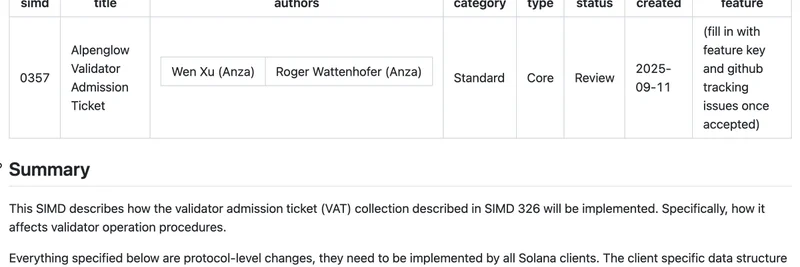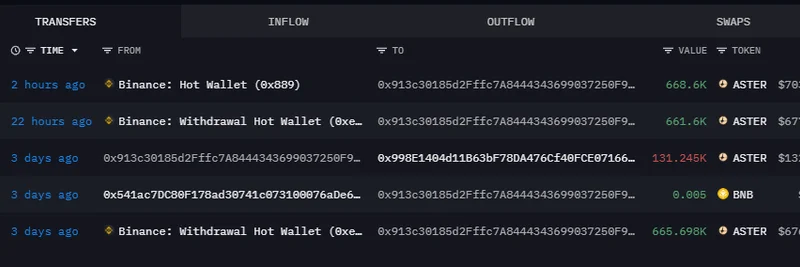If you're keeping tabs on Solana's evolution, you've probably heard whispers about Alpenglow—the upcoming upgrade aiming to boost network performance and security. Recently, Anza, a key player in Solana's development, dropped a thread on X detailing SIMD-0357. This proposal outlines the Validator Admission Ticket (VAT) system, a clever mechanism to manage who gets to participate in validating the network. Let's break it down in plain English.
What's SIMD-0357 All About?
At its core, SIMD-0357, authored by Wen Xu and Roger Wattenhofer from Anza, spells out how validators will join the active set in the Alpenglow era. Solana wants to cap the active validators at 2,000 to keep things secure and efficient. The VAT acts like an entry fee, ensuring only prepared and eligible validators make the cut.
Think of it this way: In blockchain networks like Solana, validators are the guardians who confirm transactions and maintain consensus. With too many, things can get chaotic, so this cap helps maintain order.
Key Requirements for Validators
To snag a spot in an Alpenglow epoch (that's Solana's term for a set period of blocks), validators need to check two main boxes:
A Valid BLS Public Key: This is for aggregated voting, a tech that bundles votes efficiently to speed up the network. BLS stands for Boneh-Lynn-Shacham, a cryptographic scheme that allows secure signature aggregation—basically, it makes voting smoother and more secure.
At Least 1.6 SOL in Their Identity Account: This covers the VAT fee, which is burned (permanently removed from circulation) to prevent spam and ensure commitment. The identity account is linked 1:1 with the vote account, keeping things straightforward.
If you don't meet these, you're out for that epoch. It's a way to filter for serious players.
How the Selection Process Works
Here's the step-by-step:
Sorting by Stake: At the end of each epoch, all validators are ranked based on their staked SOL—the more stake, the higher you rank.
Picking the Top 2,000: Only the highest-ranked ones with valid BLS keys and enough SOL get selected.
Paying the Fee: Each chosen validator pays 1.6 SOL, which gets burned right at the start of the new epoch. This happens before any transactions, so all clients stay in sync on the network's state.
Validators lower in the ranks or missing the BLS setup won't get a slot in the leader schedule—the roster that decides who proposes blocks next. Pro tip for operators: Double-check your setup before the epoch flips to avoid getting sidelined.
Why This Matters for Solana and Meme Tokens
This isn't just tech jargon; it's about making Solana more robust. With a controlled validator set, the network can handle higher loads without compromising security—great news for meme token creators and traders who rely on Solana's speed for pumps and launches. Fewer validators mean potentially faster consensus, which could translate to quicker transactions for your favorite dog-themed coins.
Anza's thread emphasizes that these are protocol-level changes, meaning every Solana client must implement them. For the nitty-gritty details, check out the full proposal on GitHub here. It's open for discussion, so if you're a dev or validator, jump in and share your thoughts.
As Solana pushes boundaries, proposals like SIMD-0357 show how the ecosystem is maturing. Stay tuned to Meme Insider for more breakdowns on how these updates impact the wild world of meme tokens and blockchain tech. What's your take on the VAT system—game-changer or just another hurdle?


